#quantum gravity
Text
holy fuck someone is claiming they finally broke physics
17 notes
·
View notes
Text



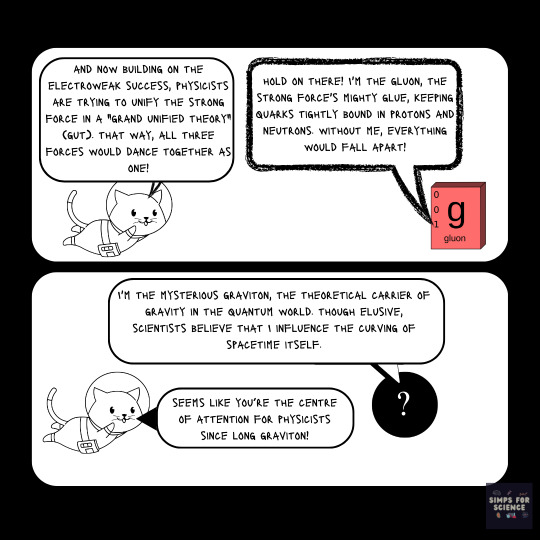



🪐 Explore the quantum dance of the four fundamental forces with Milton! 🐈⬛Join him as he meets the particles behind electromagnetism, gravity, and strong and weak nuclear forces. Swipe ➡ through this post to unfold their mystery. Which one is your favorite? 🤔Let us know in the comments!
📸Image credit: MARK GARLICK/SCIENCE PHOTO LIBRARY/GETTY IMAGES PLUS; ADAPTED BY L. STEENBLIK HWANG
#science#science facts#education#discover#study blog#scicomm#research scientist#explore#physics#quantum physics#quantum mechanics#quantum gravity#physicist#big bang#bigbangtheory#schrödinger#schrodinger#cat#universe#planckepoch#planck epoch#photon#boson#gravity#albert einstein#cosmology#cosmos#space#space facts#astronomy
13 notes
·
View notes
Text
"Scientists are a step closer to unraveling the mysterious forces of the universe after working out how to measure gravity on a microscopic level."
"(...) now physicists at the University of Southampton, working with scientists in Europe, have successfully detected a weak gravitational pull on a tiny particle using a new technique.
They claim it could pave the way to finding the elusive quantum gravity theory.
The experiment, published in Science Advances, used levitating magnets to detect gravity on microscopic particles—small enough to border on the quantum realm.
Lead author Tim Fuchs, from the University of Southampton, said the results could help experts find the missing puzzle piece in our picture of reality.
He added, "For a century, scientists have tried and failed to understand how gravity and quantum mechanics work together. Now we have successfully measured gravitational signals at a smallest mass ever recorded, it means we are one step closer to finally realizing how it works in tandem.
"From here we will start scaling the source down using this technique until we reach the quantum world on both sides. By understanding quantum gravity, we could solve some of the mysteries of our universe—like how it began, what happens inside black holes, or uniting all forces into one big theory.""
continue reading article
#physics#quantum physics#magnetism#microscopic#scaling#quantum mechanics#gravity#push and pull#frequency#energy#quantum gravity#levitation#density#mass#matter#science#discovery#material science#magnetic field
9 notes
·
View notes
Text
These Crazy Mf Created a Holographic Quantum Wormhole in a Quantum Computer 🙈🤯😳🪱🕳
youtube
#my brain can barely handle this rn#this is insane#quantum mechanics#quantum gravity#quantum entanglement#quanta magazine#holographic wormhole#wormhole#Youtube#quantum physics
73 notes
·
View notes
Text

i love physicists
8 notes
·
View notes
Text
Thought experiment regarding non-linear causal nets using an analogy of "dynamical chess"
Imagine a flexible chess board where each move of the chess figures alters the board. And each alteration of the board has effects on the figures as well, causing alteration in the behavior of the figures [a.k.a. the rules each figure has as a pre-defined rule]. | (That's entanglement of feedback-loops.) - This leads to chaotic behavior, making predictions even more difficult and "turbulent".
[This sort of chess is like the interaction between spacetime and matter.]
Following a helpful quote by John Wheeler:
"Spacetime tells matter how to move; matter tells spacetime how to curve."
- John Archibald Wheeler, Geons, Black Holes and Quantum Foam: A Life in Physics
---
Why do I use the neologism "non-linear causal nets"?
There is a kind of idiom-like brabble, called "causal chains". It states a linear string of cause-and-effect. This is often far too simplified for explaining real-life phenomena, because often there are far more causes to an effect than just one. There happen many "causal chains" simultaneously, so to speak. These causal chains are entangled. Multiple of such linear cause-and-effects are entangled, until they are no longer a linear-string or multiple linear strings, but a complex web. Each causal chain alters each other. That is basically a fundamental principle often recognized in quantum mechanics - interference.
It describes conservation of momentum in an analogy-based and merely imagination-based language of knots and loops, similar to some approaches of string theory and (loop) quantum gravity.
Information weaving
"Information weaving" might be the silly name I would use for that collection of conceptions and re-interpretations.
"Information transforms" in this conception are weaving patterns. In concrete, these are interaction patterns like
- replication of interaction pattern (like law of inertia)
- and interference/alteration of interaction pattern (momentum).
These two transforms are the two primary transforms. You can combine them and create all possible sorts of patterns.
Furthermore,... these relate to addition and multiplication of imaginary numbers, resulting in either a translation or a rotation in the complex plane... These might relate to the information transforms stated above.
But the research regarding this is really difficult and curently my mind is too sluggish and too over-crowded to compute it well enough.
It might take some years until it's less mad nonsense.
...
Spacetime as emergent property of entanglement
I enjoy the project It from Qubit and Polymath Vijay's interpretation that spacetime is emergent due to entanglement.
In my interpretation/analogy of "information weaving" time is a string, and space is the web consisting of that string. Space and time are hence "two aspects of one and the same thing".
This is especially interesting if you consider the difference between a time and a space dimension.
A space dimension has two ways of propagation, so to speak: left-right, top-down, before-behind... (to put it in plain words)
When it comes to the time dimension, I consider it to have only one propagation direction: The future, like in the conception of the arrow of time.
But here it becomes complex. Since time is "mono-directional", say, it has only one direction to propagate towards, it might interact with itself - via feedback-loops. This results in literal entanglement if you consider the arrow of time to be a simple string. Loop, knot and weave that string/arrow with itself and you might have spacetime as a complex result, so to speak.
In regards to quantum entanglement and superposition this interpretation might make sense as well, but I am not far enough with my research about that topic to summarize it coherently.
Furthermore, you can also define quantum gravity as the "degree of clotting": or, say: Let's interpret gravity as a principle of clustering: Areas with more density gain density, and areas with less density lose even more density, to reduce gravity to its primary principle.
Gravity is hence a re-distribution, a re-ordering of matter, or information, so to speak...
In regards to my information weaving conception, quantum gravity defines the density of information. It also defines how information re-distributes itself over time.
How the clustering happens depends on the patterns of interaction. And the patterns of interaction are affected by clustering as well. (Leading us back to Wheeler's quote above... )
What is "information"?
I regard information as an interaction pattern, a pattern in the web of causal nets, so to speak.
...
This is all a bit difficult to summarize. I will visualize it once I have summarized the parts of it well enough.
---
That was my literally chaotic thoughts as of today. It's a bit (/very much) incoherent.
#from the backyard of my theoretical bullshittery factory#information weaving#it from qubit#quantum gravity#analogy#analogies#chess#dynamical systems#non linear causal nets#entangled#entanglement#causality#cause and effect#conservation of momentum#quantum mechanics#information#quantum information theory#quantum information#quote#wheeler#spacetime#space#time#relativity#chaos theory#chaos#interaction patterns#math#mathematics#thought experiment
43 notes
·
View notes
Text
Simulated Wormholes for My Real Friends, Real Wormholes for My Simulated Friends
Simulated Wormholes for My Real Friends, Real Wormholes for My Simulated Friends
Maybe you’ve recently seen a headline like this:
Actually, I’m more worried that you saw that headline before it was edited, when it looked like this:
If you’ve seen either headline, and haven’t read anything else about it, then please at least read this:
Physicists have not created an actual wormhole. They have simulated a wormhole on a quantum computer.
If you’re willing to read more, then…

View On WordPress
#academia#black hole#gravity#press#PublicPerception#quantum computing#quantum gravity#quantum mechanics#science communication#string theory#theoretical physics
15 notes
·
View notes
Text
"the problem with the quantum gravity theory? we dont have one."
- my astrophysics prof last week
#physics#studyblr#astrophysics#astronomy#cosmology#quantum physics#quantum gravity#physics theory#lecture quotes#prof quotes
4 notes
·
View notes
Text
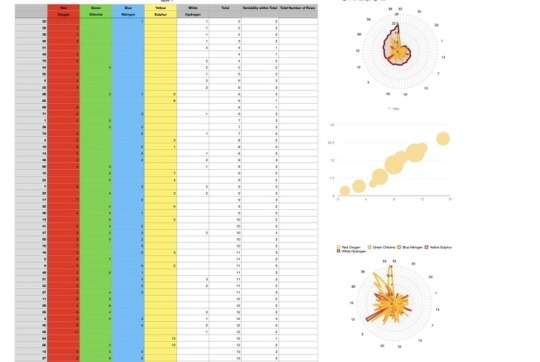
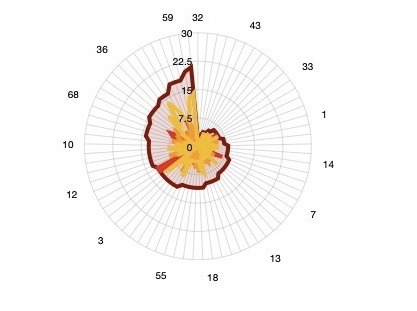
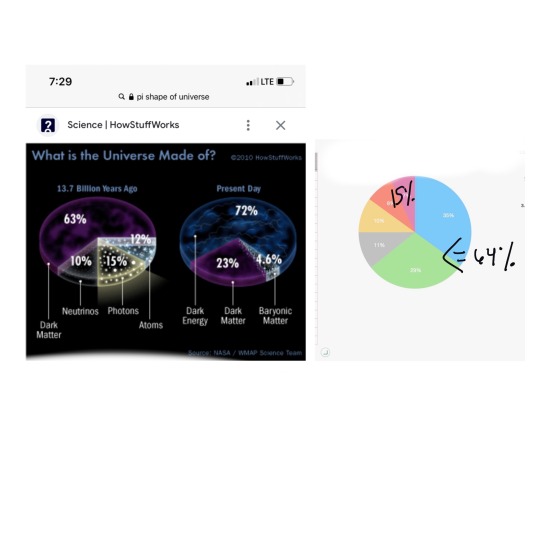
Dude what the Fibonacci ! My data calculations have not only taken shape into the fibbin pho nacci but also mirror almost exactly the same amount as 13.8 billion years ago.
Never underestimate light

This means our universe is not expanding..
2 notes
·
View notes
Text
Atoms, Empires, and the Art of Conquest: A Quantum Odyssey with Alexander the Great
Hey there, Tumblr denizens and fellow conquerors of the cosmic unknown! Gather around the campfire of curiosity as we, the proud descendants of the great Alexander (yes, that Alexander, the one who made "conquering" a household term), set forth on a new kind of conquest. This isn't your run-of-the-mill empire building; oh no, we're diving - oops, I mean charging - headfirst into the swirling, mind-boggling world of quantum gravity!
So, picture this: there's Alexander the Great, right? You know him - the guy who made empires fashionable before Caesar even learned to tie his sandals. Now, imagine if Alex, instead of prancing around Asia and Egypt, decided to narrate a tale about quantum gravity. Sounds wild? Buckle up, because that's exactly the ride we're on!
First off, quantum gravity isn't just your average science topic. It's like the ultimate boss level in the video game of physics, where the microscopic frenzies of quantum mechanics clash with the grandiose, universal sweep of general relativity. It's like trying to choreograph a ballet with elephants and ants - good luck with that!
But here's where it gets juicy. Our man Alex, in all his glory, takes us through this cosmic battlefield with the flair only a legendary conqueror could muster. He compares tiny atoms to the vast kingdoms he subdued, talks about quarks and electrons like they're dodgy politicians, and even brings in Einstein - picture a wise old oracle with hair crazier than a thunderstorm - as a key player in this saga.
And oh, the theories! String Theory, with its idea of the universe playing out on a microscopic, string-laden stage, is like trying to tune the lyre of the cosmos. Then there’s Loop Quantum Gravity, which Alex likens to a cosmic armor, crafting the universe stitch by quantum stitch. It's a riot of ideas, a feast for the brain!
But here’s the kicker – even with all these theories strutting about, quantum gravity remains as elusive as the fabled Golden Fleece. It’s like the universe threw us a riddle wrapped in a mystery inside an enigma and then ran off giggling.
In true Alexander style, we're reminded that this quest, this wild, untamed pursuit of knowledge, is what drives us forward. It's not just about unifying theories or solving cosmic puzzles; it's about the journey, the adventure, the sheer thrill of chasing after the unknown.
So, dear readers, as we saddle up with Alex, let's not forget the spirit of exploration that drives us. Whether we're conquering empires or unraveling the mysteries of the universe, it's that unquenchable thirst for the unknown that keeps us going. Onward, to the quantum frontiers!
0 notes
Text
The Cosmic Dance
Unveiling the Twin Extremes of RealityIn the vast expanse of the cosmos, where stars are born and galaxies spin in a ceaseless dance, there resides a profound mystery that has long captivated the human spirit. This mystery is the echoing symmetry between the micro and the macro, the smallest and the largest scales of existence. It beckons a spiritually enlightened realization that the Planck…
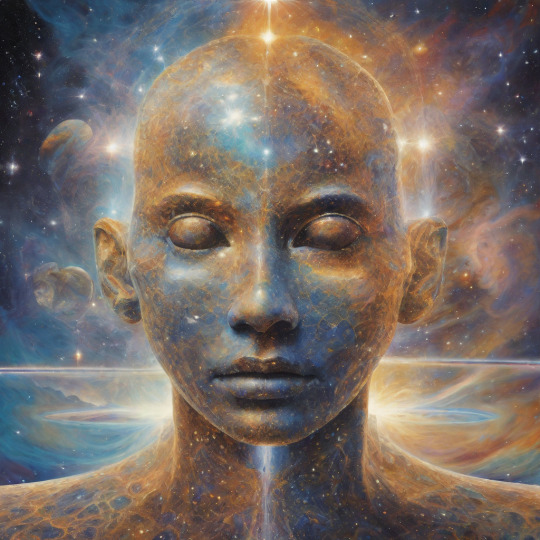
View On WordPress
#Cosmic Consciousness#cosmological scale#general relativity#Interconnectedness#mystic entanglement#Planck scale#quantum gravity#Quantum Mechanics#reality#spiritual enlightenment
1 note
·
View note
Text
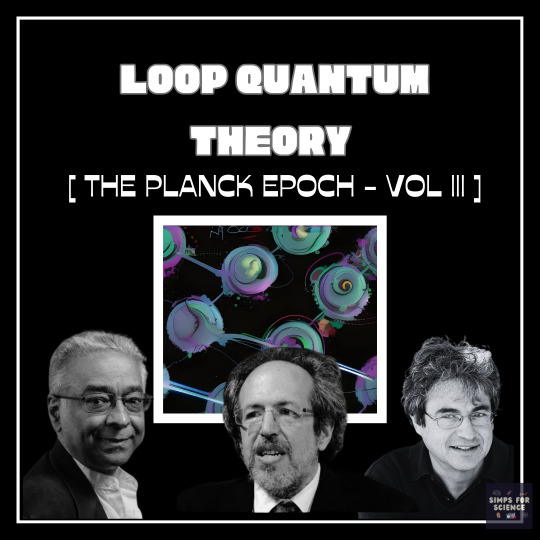
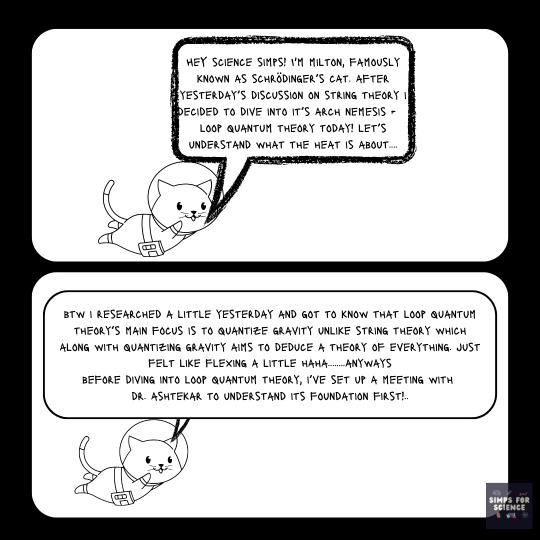
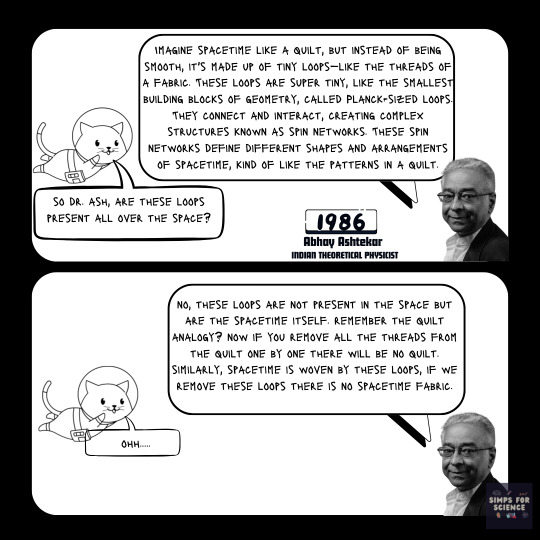

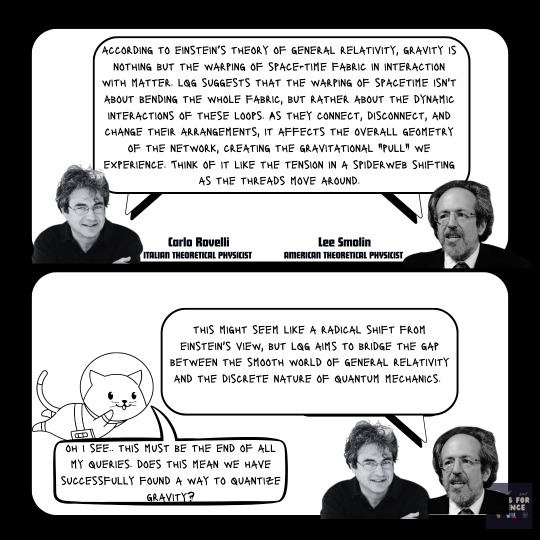


⁉️ What if you're told to forget smooth spacetime and imagine the universe as a cosmic quilt made up of loops? 💭 ➰ That's Loop Quantum Theory! which proposes that space itself is made of tiny, 🤏🏻 interconnected loops, ➿ a fabric of reality finer than any thread. Swipe ➡️ through this post to find how it is a potential quantum upgrade to Einstein's gravity, where the universe isn't just curved, it's knotted!🪢☄️🌠
📸 Image Credits:
Abhay Astekar :- PennState Eberly College of Science
Carlo Rovelli :- Foto LaPresse
Lee Smolin :- footnotes2plato
#loop quantum gravity#quantum mechanics#general relativity#quantum gravity#quantum physics#physics#physicist#astronomy#astrophysics#cosmos#comic art#comics#cosmology#space#nasa#planckepoch#max planck#education#science#science facts#discover#study blog#scicomm#explore#cool science#simps for science
15 notes
·
View notes
Text
Problems with String Theory in Quantum Gravity
Sfetcu, Nicolae (2023), Problems with String Theory in Quantum Gravity, Cunoașterea Științifică, 2:4, xxx,
Abstract
String theory, a framework that aims to reconcile general relativity and quantum mechanics, holds a unique position in the field of quantum gravity. In quantum field theory, the main obstacle is the occurrence of the untreatable infinities in the interactions of the particles due…

View On WordPress
#brane theory#epistemology#M-theory#quantum field theory#quantum gravity#string theory#superstring theory#unified theory
0 notes
Text
Quantum Gravity: A Challenge to Theoretical Physics.
Introduction:
The world of physics is always in constant evolution, and researchers have been attempting to reconcile two of the most significant theories of the modern age: quantum mechanics and general relativity. Quantum mechanics and general relativity are two fundamental pillars of modern physics.
They have been successful in their respective domains, but their compatibility with each other…

View On WordPress
0 notes
Photo

Underground Italian lab searches for signals of quantum gravity For decades physicists have been hunting for a quantum-gravity model that would unify quantum physics, the laws that govern the very small, and gravity. One major obstacle has been the difficulty in testing the predictions of candidate models experimentally. But some of the models predict an effect that can be probed in the lab: a very small violation of a fundamental quantum tenet called the Pauli exclusion principle, which determines, for instance, how electrons are arranged in atoms. An FQXi-funded project carried out at the INFN underground laboratories under the Gran Sasso mountains in Italy, has been searching for signs of radiation produced by such a violation, in the form of atomic transitions forbidden by the Pauli exclusion principle. In two papers appearing in the journals Physical Review Letters (published on 19th September 2022) and Physical Review D (accepted for publication on 7th December 2022) the team reports that no evidence of violation has been found, thus far, ruling out some quantum-gravity models. "You, me, we are Pauli-exclusion-principle-based. The fact we cannot cross walls is another consequence," says Curceanu. “The Pauli exclusion principle is the main pillar of our comprehension of the structure of matter and of its stability,” says Catalina Curceanu, a member of the physics think-tank, the Foundational Questions Institute, FQXi, and the lead physicist on the experiments at INFN, Italy. In school chemistry lessons we are taught that electrons can only arrange themselves in certain specific ways in atoms, which turns out to be due to the Pauli exclusion principle. At the center of the atom there is the atomic nucleus, surrounded by orbitals, with electrons. The first orbital, for instance, can only house two electrons. The Pauli exclusion principle, formulated by Austrian physicist Wolfang Pauli in 1925, says that no two electrons can have the same quantum state; so, in the first orbital of an atom the two electrons have oppositely pointing 'spins' (a quantum internal property usually depicted as an axis of rotation, pointing up or down, although no literal axis exists in the electron). The happy result of this for humans is that it means matter cannot pass through other matter. “It is ubiquitous—you, me, we are Pauli-exclusion-principle-based,” says Curceanu. “The fact we cannot cross walls is another practical consequence.” The principle extends to all elementary particles belonging to the same family as electrons, called fermions, and has been derived mathematically from a fundamental theorem known as the spin-statistics theorem. It has also been confirmed experimentally–thus far–appearing to hold for all fermions in tests. The Pauli exclusion principle forms one of the core tenets of the Standard Model of Particle Physics. Violating the principle But some speculative models of physics, beyond the Standard Model, suggest that the principle may be violated. For decades now, physicists have been searching for a fundamental theory of reality. The Standard Model is terrific at explaining the behavior of particles, interactions and quantum processes on the microscale. However, it does not encompass gravity. So, physicists have been trying to develop a unifying theory of quantum gravity, some versions of which predict that various properties that underpin the Standard Model, such as the Pauli exclusion principle, may be violated in extreme circumstances. “Many of these violations are naturally occurring in so-called 'noncommutative' quantum-gravity theories and models, such as the ones we explored in our papers,” says Curceanu. One of the most popular candidate quantum-gravity frameworks is string theory, which describes fundamental particles as tiny vibrating threads of energy in multidimensional spaces. Some string theory models also predict such a violation. "The analysis we reported disfavors some concrete realizations of quantum gravity," says Curceanu. It is traditionally thought to be hard to test such predictions because quantum gravity will usually only become relevant in arenas where there is a huge amount of gravity concentrated into a tiny space—think of the center of a black hole or the beginning of the universe. However, Curceanu and her colleagues realized that there may be a subtle effect—a signature that the exclusion principle and the spin-statistics theorem have been violated—that could be picked up in lab experiments on Earth. Deep under the Gran Sasso mountains, near the town of L’Aquila, in Italy, Curceanu’s team is working on the VIP-2 (Violation of the Pauli Principle) lead experiment. At the heart of the apparatus is a thick block made of Roman lead, with a nearby germanium detector that can pick up small signs of radiation emanating from the lead. The idea is that if the Pauli exclusion principle is violated, a forbidden atomic transition will occur within the Roman lead, generating an X-ray with a distinct energy signal. This X-ray can be picked up by the germanium detector. Cosmic silence The lab must be housed underground because the radiation signature from such a process will be so faint, it would otherwise be drowned out by the general background radiation on Earth from cosmic rays. “Our laboratory ensures what is called ‘cosmic silence,’ in the sense that the Gran Sasso mountain reduces the flux of cosmic rays by a million times,” says Curceanu. That alone is not enough, however. “Our signal has a possible rate of just one or two events per day, or less,” says Curceanu. That means that materials used in the experiment must themselves be “radio-pure”—that is, they must not emit any radiation themselves—and the apparatus must be shielded from radiation from the mountain rocks and radiation coming from underground. “What is extremely exciting is that we can probe some quantum-gravity models with such a high precision, which is impossible to do at present-day accelerators,” says Curceanu. In their recent Physical Review Letters paper, published in September, and in a follow up paper in Physical Review D (accepted in December), the team reports having found no evidence for violation of the Pauli principle. “FQXi-funding was fundamental for developing the data analysis techniques,” says Curceanu. This allowed the team to set limits on the size of any possible violation and helped them constrain some proposed quantum-gravity models. In particular, the team analyzed the predictions of the so-called “theta-Poincaré” model and were able to rule out some versions of the model to the Planck scale (the scale at which the known classical laws of gravity break down). In addition, “the analysis we reported disfavors some concrete realizations of quantum gravity,” says Curceanu. The team now plans to extend its research to other quantum-gravity models, with their theoretician colleagues Antonino Marcianò from Fudan University and Andrea Addazi from Sichuan University, both in China. “On the experimental side, we will use new target materials and new analysis methods, to search for faint signals to unveil the fabric of spacetime,” says Curceanu. “What is extremely exciting is that we can probe some quantum-gravity models with such a high precision, which is impossible to do at present-day accelerators,” Curceanu adds. “This is a big leap, both from theoretical and experimental points of view.” IMAGE....The Gran Sasso low radioactivity underground lab. CREDIT Massimiliano De Deo, LNGS-INFN
0 notes
Text
https://www.quantamagazine.org/the-mystery-at-the-heart-of-physics-that-only-math-can-solve-20210610/
The Mystery at the Heart of Physics That Only Math Can Solve | Quanta Magazine
Interesting article. I would like to add my thoughts about that quote:
"Every other idea that’s been used in physics over the past centuries had its natural place in mathematics. This is clearly not the case with quantum field theory." - Nathan Seiberg, the Institute for Advanced Study
Non-linear axiomatic networks [chaotic processes in non-linear axiomatic systems - say, Quantum Logic] might be the base for the mathematics of QFT - It's time to bring the 21st century in mathematics, I'd say. The mathematics for probabilistic phenomena such as Quantum Mechanics, might not be discovered yet, yet it does not imply it does not exist.
In other words, part of my study deals with Quantum Mechanics being a special threshold or interface between a mathematical reality, entirely information-based, and the physical manifestation thereof. It could explain phenomena such as entanglement and superposition, and furthermore could concretize what a wave function collapse might be - translated into a language human imagination could possibly comprehend.
Somehow the mathematics of quantum mechanics seems intuitive to me - as the life-long analysis of my non-linear cognition is - just that - In plain words, my cognition is the perfect imitation of a quantum computation system. In the recent years, especially months I could continue with my studies on chaotic processes in non-linear axiomatic systems, besides my thesis in the cognitive science sector - about non-linear cognition, a thermodynamic model of the mind, and a "mathematication" of the entire concept of human memories - how they are stored in the brain, and how uncertainty plays an important factor in cognition and memory processing. - This, in return, leads me to many insights regarding quantum logic, turbulences|Navier-Stokes in information distribution, and how it corelates with quantum gravity. [Quantum gravity being an information clustering mechanism]
#quantum physics#math#mathematics#quantum field thory#quantum gravity#quantum mechanics#information weaving#qft#quantum logic#navier stokes#cog sci#non-linear axiomatic systems#logic
47 notes
·
View notes